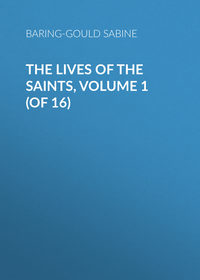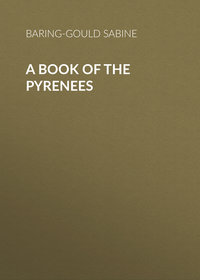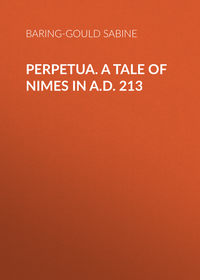 полная версия
полная версияDevonshire Characters and Strange Events
“I freely forgive all the Parish, and as for the Overseers, they did to the utmost of their power, when my Flesh was separated; and whatever I desired of them, they sent me, so I desire that all may be blameless of my Misfortunes. My Pains increased to a wonderful Degree and my Legs grew worse, and was driven to dismal Extremity, and lay in that Condition three Weeks.
“On the 18th Day of March about 8 o’clock in the Evening there came a Woman to the Barn-door to ask me how I did. I was going to show her how my Legs were, and how the Flesh was separated from the Bones, and leaning a little harder than Ordinary upon my left leg, it broke off as though it were a rotten Stick, a little below the Calf; the woman left me, and I was surprised, but God enabled me to bind up my Leg again with the same Medicines as before; and when most of the People of the Village were at rest, then a Man that liv’d over against the Barn came to see me, and asked me how I did. I desired him to get me some Beer at the Overseers, but he fetched me some of his own and left me; so there was no one with me. I submitted myself to God, and after some time fell asleep, and slept till the morning. And as soon as ’twas Light, dressed the wound before any came to me, and the Flesh covered the Bone, but had no Loss of Marrow, and but little of Blood, nor hardly any Pain. The Mercies there received at the Hands of God exceeded all the Punishment was due to me thro’ Sin, and His Mercy I never did deserve. I was visited by abundance of People, and amongst them God sent me the Minister of Keinsham, and Mr. Brown of the same Town came along with him, and they afforded me much Comfort; they told me they never saw the like, and it was God’s handy Work, and not Man’s, so taking leave of me, they wished that the God of Heaven might be my Physician, and it gave me a merry Heart and cheerful Countenance, and gave them Thanks for what Favours I had received from them, and my Pains still ceased. Abundance came both far and near all the Week to see me, and amongst the rest a Surgeon, who persuaded me to have the Bone of my right Leg taken off, to which I gave Consent. On the 25th about 6 in the Morning, when I arose and opened the Cloaths, I found my Legs were fallen from me, and the Pains I then suffered were not worthy to be called Pains; so I dressed it with the same Medicine I made use of before; within two Hours after came several People to visit me. I unbound the Cloaths and the Flesh was closed over the Bone, and the Blood was stopp’d. So I had great Reason to praise the Lord for all His Mercies and Favours I had received from Time to Time.”
EPITAPH ON F. FLOOD’S LEGSBuried in Saltford ChurchyardStop Reader, and a Wonder See,As strange as e’er was known!My Feet drop’d off from my Body,In the Middle of the Bone.I had no Surgeon for my HelpBut God Almighty’s Aid,In Whom I ever will relyAnd never be afraid.Though here beneath (the Mold) they lieCorruption for to see,Yet they shall one Day reuniteTo all Eternity.The last line might have been amended to —
And walk away with me.This curious tract is entitled The Devonshire Woman: or a Wonderful Narrative of Frances Flood. It bears no date, but is of about 1724. At the end stands: “Printed for Frances Flood, and sold by Nobody but herself.”
In fact, the poor creature went about on crutches selling the story of her misfortunes. The tract is very scarce, but there is a copy in the British Museum.
SIR WILLIAM HANKFORD
In the Second Part of Henry IV, Shakespeare makes his hero, Prince Hal, behave with splendid generosity to Judge Gascoigne, who had committed him to prison for striking him in open court.
The King says to him: —
How might a prince of my great hopes forgetSo great indignities you laid upon me?What! rate, rebuke, and roughly send to prisonThe immediate heir of England! Was this easy?May this be wash’d in Lethe, and forgotten?The Chief Justice replies: —
I then did use the person of your father;The image of his power lay then in me:And, in the administration of his law,Whiles I was busy for the commonwealth,Your highness pleasèd to forget my place,The majesty and power of law and justice,The image of the king whom I presented,And struck me in my very seat of judgment;Whereon, as an offender to your father,I gave bold way to my authority,And did commit you.Shakespeare makes King Henry V recognize that Gascoigne was in the right.
You are right, justice, and you weigh this well;Therefore still bear the balance and the sword.But here Shakespeare has not been true to history. His ideal king was not so generous as he represented him. In fact, directly on his accession Henry displaced Gascoigne from the Chief-Justiceship, and elevated to his place the Devonshire lawyer Sir William Hankford, Knight of the Bath.
Prince, indeed, in his Worthies of Devon, claims that it was Hankford who committed Prince Hal to prison; but this is a mistake, the brave and resolute judge was Sir William Gascoigne, who was displaced, and Sir William Hankford installed as Chief Justice in his room by Henry V eight days after his accession.
Sir William was probably born at Hankford, the ancient seat of the family, in the hamlet of Bulkworthy, a chapel-of-ease to Buckland Brewer. He was made Serjeant-at-law in 1391 in the reign of Richard II, and was advanced to be one of the lords-justices in the Court of Common Pleas in 1397. He was made Knight of the Bath at the coronation of Henry IV, and, as already said, he was called up higher to be Chief Justice by Henry V on his accession to the throne. He retained his office for part of a year under Henry VI, so that he served under four kings. He moved from Hankford, the family seat, to Annery, in the parish of Monkleigh, near Great Torrington, a beautiful spot on the Torridge. Here he had a stately mansion “famous for a large upper gallery, wherein might be placed thirty standing beds, fifteen of a side, and yet not one to be seen there. Nor could you from one bed see another: for this gallery being very long and wainscotted on each hand, there were several doors in it, which led into little alcoves or apartments, well plaistered and whited, large and convenient enough for private lodgings.”
Annery still stands in its beautiful park, but the gallery has disappeared; it was pulled down in the year 1800.
Towards the end of his days Hankford fell into deep fits of depression in retirement at Annery, where, weary of life and despondent at the prospect of the new reign with an infant as king, and with furious rivalries ready to break forth and tear the kingdom to pieces, he was impatient that death might end his troubles.
“On a fit time for the purpose, he called to him the keeper of his park, which adjoined his house at Annery, and charged him with negligence in his office, suffering his deer to be killed and stolen; whereupon he left it in strict charge with him, that he should be more careful in his rounds by night, and that if he met any one in his walk that would not stand and speak, he should shoot him, whoever he was, and that he would discharge him (i.e. free him of blame). This the keeper directly promised, and too faithfully performed. The judge having thus laid the design, meaning to end his doleful days, in a dark tempestuous night, fit for so black an action, secretly conveyed himself out of the house, and walked alone in his park, just in the keeper’s way; who being then in his round, hearing somebody coming towards him, demanded, Who was there. No answer being made, he required him to stand; the which when he refused to do, the keeper shot and killed him upon the place: and coming to see who he was, found him to be his master.”
So relates Prince, following Baker’s Chronicle, 1643, and Risdon and Westcote. But Sir Richard Baker’s account is full of errors: he makes Hankford die in the reign of Edward IV, whereas he died in the same year as Henry V (1422). Prince objects that the story may not be true or only partly true. That Sir William was killed by his keeper is a fact not to be disputed, but that he purposely contrived his own death is very doubtful – it is a conjecture and no more.
Sir William was a liberal and religious man: he built the chapel at Bulkworthy, as well as the Annery Aisle to Monkleigh Church. In this latter he lies interred, and a noble monument was erected over him, with the epitaph: “Hic jacet Willielmus Hankford, Miles, quondam Capitalis Justiciarius Domini Regis de Banco, qui obiit xx die mensis Decembris, Anno Domini MCCCCXXII. Cujus Animae propicietur Deus. Amen.”
He is represented kneeling in his robes alongside of his wife. Out of his mouth proceeds this prayer: “Miserere mei Deus, secundum magnam misericordiam tuam.” A book in his hand is inscribed with “Miserere mei Deus secundum magnam justiciam divinam,” and over his head is “Beati qui custodiunt judicium et faciunt justiciam omni tempore.”
SIR JOHN FITZ
Tavistock, in the reign of Elizabeth, was a more picturesque town than it is at present. Then the abbey walls, crenellated and with towers at intervals, were still standing in complete circuit, and the abbey church, the second finest in the county and diocese, though unroofed, was still erect. The houses, slate-hung in quaint patterns representing fleurs-de-lis, oak leaves, swallow-tails, pomegranates, with gables to the street, were very different from the present houses, stuccoed drab and destitute of taste. Moreover the absurd, gaunt market hall erected last century was not a central and conspicuous disfigurement to the town.
But a few strides to the west, on the Plymouth road, stood Fitzford House, a mansion recently erected, consisting of a court, entered through a massive gate-house, and the mansion standing back, with porch and projecting wings.
In this house lived the Fitz family. They had been there for four generations and had married well. They were also well estated, with property in Cornwall, in Kent and Southwark, as well as in Devon. John Fitz, the father of the man whose tragic history we are about to relate, married Mary, daughter of Sir John Sydenham, of Brimpton, in Somerset, and had late in life one son, the “unfortunate” Sir John. The Fitzes had been a family bred to the law; the first known of them, John Fitz, had been a bencher of Lincoln’s Inn, and the John Fitz who married Mary Sydenham was also a counsellor-at-law, and he managed considerably to add to the wealth of the family. When he had got as much as he wanted out of the pockets of his clients, he retired to his family place of Fitzford and there amused himself with astrology and the casting of horoscopes. When his son John was about to be born in 1575, John Fitz studied the stars, and, says Prince, “finding at that time a very unlucky position of the heavens, he desired the midwife, if possible, to hinder the birth but for one hour; which, not being to be done, he declared that the child would come to an unhappy end and undo the family.”
John Fitz was riding over the moor one day with his wife, when they lost their direction, were, in fact, pixy-led, and they floundered through bogs, and could nowhere hit on the packhorse track that led across the moors from Moreton Hampstead to Tavistock. Exhausted and parched with thirst they lighted on a crystal stream, dismounted, and drank copiously of the water. Not only were they refreshed, but at once John Fitz’s eyes were opened, the spell on him was undone, and he knew where he was and which direction he should take. Thereupon he raised his hand and vowed he would honour that well, so that such travellers as were pixy-led might drink at it and dispel the power over them exercised by the pixies. The spring still flows and rises under a granite structure erected in fulfilment of his vow by John Fitz; it bears his initials and the date 1568 in raised figures and letters on the covering stone. Formerly it was on a slope in the midst of moorland away from the main track, near the Blackabrook. Now it is enclosed in the reclaimed tract made into meadows by the convicts of Princetown. Happily the structure has not been destroyed: it is surrounded by a protecting wall.
In the same year that John Fitz erected this well, he obtained a lease to carry water in pipes of wood or of lead through the garden of one John Northcott to his mansion at Fitzford. The little house that he built over the spring in his close, called Boughthayes, still stands, picturesquely wreathed in ivy.
He died 8 January, 1589–90, aged sixty-one, and by his will made his wife executrix and guardian of his son, who was then rather over fourteen years old. There is a stately monument in Tavistock Parish Church to John Fitz and his wife, he clothed in armour, which in life he probably never wore, as he was a man of the long robe. The effigies are recumbent, and by them is a smaller, kneeling figure of the son and heir – their only child, the “unfortunate” John Fitz. But the widow did not have charge of her son; as a ward under the Queen he was committed to Sir Arthur Gorges, “who tended more to the good of the child than his own private profit,” which was perhaps unusual. Mary Fitz retired to Walreddon, near Tavistock, another house belonging to the family, for her initials “M. F.” and the date 1591 are cut in granite over the doorway. But presently she married Christopher Harris, of Radford, when she moved to his house near Plymouth.
The young John Fitz is described as having been “a very comlie person.” He was married, before he had attained his majority, to Bridget, sixth daughter of Sir William Courtenay. Of this marriage one child, Mary, was born 1 August, 1596, when her father was just twenty-one years old. John Fitz was now of age, considered himself free of all restraint, owner of large estates, and was without stability of character or any principle, and was inclined to a wild life. He took up his residence at Fitzford, and roystered and racketed at his will.
One day (it was 4 June, 1599) he was dining at Tavistock with some of his friends and neighbours. The hour was early, for in the account of it we are told that “with great varietie of merriments and discourse they outstript the noontide.”
John Fitz had drunk a good deal of wine, and he began to brag of his possessions, and boasted that he had not a foot of land that was not his freehold. Among those present was Nicholas Slanning, of Bickleigh. He interrupted Fitz, and said, “That is not so. You hold of me a parcel of land that is copyhold, and though of courtesy it has been intermitted, yet of due, you owe me so much a year for that land.”
John started from his seat, and told Slanning to his face that he lied, and mad with rage, drew his dagger and would have stabbed him. Slanning with a knife beat down Fitz’s blade, and the friends at the table threw themselves between them and patched up the quarrel as they supposed. Nicholas Slanning then left the apartment and departed for Bickleigh with his man, both being on horseback.
They had not ridden far when they came to a deep and rough descent, whereupon Slanning bade his man lead the horses, and he dismounting walked through a field where the way was easier.
At that moment he saw John Fitz with four attendants galloping along the lane after him. Without ado, Slanning awaited the party and inquired of John Fitz what he desired of him. Fitz replied that he had followed that he might avenge the insult offered him. Thereupon Fitz called to his men, and they drew their blades and fell on Slanning, who had to defend himself against five men. The matter might even then have been composed, but one of Fitz’s men, named Cross, twitted his master, saying, “What play is this? It is child’s play. Come, fight!” Fitz, who had sheathed his sword, drew it again and attacked Slanning. The latter had long spurs, and stepping back they caught in a tuft of grass, and as he staggered backward, Fitz ran him through the body. At the same time, one of Fitz’s men struck him from behind. Slanning fell to the ground and died. He was conveyed home, and buried in Bickleigh Church, where his monument still exists, but in a mutilated condition. It was of plaster, and when the church was “restored” fell to pieces; but the curious Latin inscription has been preserved.
Nicholas Slanning had been married to Margaret, daughter of Henry Champernowne, of Modbury, and he died leaving as his heir a child, and the administration of his estates was committed to that son’s great-uncle. Of Ley, the fine Slanning place, nothing now remains except the balls that stood on the entrance gates, that have been transferred to the vicarage garden at Bickleigh. The situation was incomparably beautiful, and it is to be regretted that the grand old Elizabethan mansion has been levelled with the dust. Sir Nicholas Slanning, created a baronet in 1663, moved to Maristowe in Tamerton Foliot, but the second and last baronet died without issue in 1700, and in 1798 John Modyford Heywood, who inherited the extensive Slanning estates through a female line, sold them all to Sir Manasseh Lopes, a Portuguese Jew diamond merchant, who had obtained a baronetcy by buying up rotten boroughs in Cornwall and putting in members whose votes could be relied on by the ministry of the day. The baronetcy was created in 1805. The first baronet was the son of Mordecai Lopes, of Jamaica.
“Great,” we are informed, “was the lamentation that the countryside made for the death of so beloved a gentleman as Maister Slanning was.”
John Fitz, then aged twenty-four, escaped to the Continent and stayed in France, until the exertions of his wife and mother succeeded in December, 1599, in procuring a pardon for him; whereupon he returned home, unsubdued by the past, insolent, riotous, and haughty. At the coronation of James I, 1603, he was knighted, not for any services done to the Crown or State, but because he was of good family, well connected, and with property.
He returned to Fitzford, where, finding his wife and child something of a drag upon him in his wild and dissipated career, he turned them out of doors, and his wife had to go for shelter to her father. Left now to himself and his evil associates, “Men of dissolute and desperate fortunes,” chief among whom was “Lusty Jacke, one whose deedes were indeed meane, whose qualities altogether none,” he behaved in such sort that “the Towne of Tavistocke, though otherwise orderly governed with sobriety, and likewise of grave magistrates, was thereby infected with the beastly corruption of drunkenesse. Sir John, of his own inclination apte, and by his retained copesmates urged, persevered evermore to run headlong into such enormities as their sensuality and pleasures inclined unto, spending their time in riotous surfettinge and in all abominable drunkenness, plucking men by night out of their beddes, violently breaking windows, quarrelling with ale-conners [ale-tasters], fighting in private brables amongst themselves. And when they had abused the townsmen and disturbed their neighbours, Sir John’s own house was their sanctuary or receptacle to cloak their outrages; so as it seemed they lyved as, in time of old, the common outlaws of the land did, neither worshipping God nor honouringe Prince, but wholly subject to their contentes alone.”
According to Prince, about this time Fitz committed another murder; but what seems to be better authenticated is that he all but killed one of the town constables.
In the summer of 1605, Sir John Fitz was summoned to London to appear before the courts, in answer to a claim of compensation for their father’s murder, made by the children of Nicholas Slanning, the eldest of whom, Gamaliel, was now about eighteen years old. He set out on horseback, attended by a servant. Dissipation had weakened his mind and shattered his nerves. He was in deadly alarm. Not only would he be heavily fined for the assassination of Slanning, but he had been playing ducks and drakes with his property which had been settled by deed of 20 March, 1598–9, on his wife, and he expected to be called to task for this by Sir William Courtenay, his wife’s father. He took it into his head that his life was in danger, that the friends and kinsfolk of Slanning would ambuscade and murder him; that Sir W. Courtenay would be willing to have him put out of the way so as to save the property from being further dissipated. At every point on his journey he showed himself suspicious of being waylaid or pursued. Every day his fancies became more disordered.
At length he reached Kingston-on-Thames, and put up for the night there. But he could not sleep, noises disturbed him, and rising from his bed he insisted on the servant getting ready his nag, and away he rode over Kingston Bridge, alone, having peremptorily forbidden his man to accompany him, entertaining some suspicion that the man had been bought by his enemies and would lead him into a trap. He drew up at the “Anchor,” a small tavern at Twickenham, kept by one Daniel Alley; it was now 2 a.m., and all Twickenham was asleep. He hammered at the door and shouted; presently the casement opened, and the publican put out his head and inquired what the gentleman wanted. Sir John demanded a bed and shelter for the rest of the night. Daniel Alley begged to be excused, he had no spare room, his house was small and not fitted for the reception of persons of quality. However, on Sir John’s further insistence he put on his clothes, struck a light, descended, and did his utmost to make the nocturnal visitor comfortable, even surrendering to him his own bed, and sending his wife to sleep with the children. Sir John cast himself on the bed. He tossed; and host and hostess heard him cry out, and speak of enemies who pursued him and sought his blood. There was no sleeping for Daniel or his wife, and the host rose at dawn to join a neighbour in mowing a meadow. But when he was about to go forth, his wife begged not to be left in the house alone with the strange gentleman. The neighbour came up, and he and Alley spoke together at the door. Their voices reached Sir John, who had fallen into a disordered sleep. Persuaded that the enemies were arrived and were surrounding the house, he rushed out in his nightgown, with his sword drawn, fell on his host, and killed him. Then he ran his sword against the wife, wounding her. But now, with the gathering light, he discovered what he had done, and in a fit of despair stabbed himself in two places. He was secured now by neighbours who had come up, and taken to the bed he had just quitted. A surgeon was sent for, and his wounds were bound up. But Sir John angrily refused the assistance of the leech, and tore away the bandages, and bled to death.
Daniel Alley was buried on the 8th day of August, 1605, and Sir John Fitz on the 10th, and “because he was a Gentleman borne and of good kindred, hee was buried in the Chancell at Twickenham.” The representative of the Fitz family was now his little daughter Mary, whose story is also sufficiently curious to deserve a place here.
The authority for the story of Sir John Fitz’s death is The Bloudie Booke; or, the Tragical End of Sir John Fitz. London, 1605. Probably enough written by a chaplain to the Earl of Northumberland, then at Sion House, who hearing of what had happened, sent this chaplain to Twickenham, and to Sir John, at the “Anchor,” “To put him in mind what he had done and persuade him to repent.”
LADY HOWARD
The Earl of Northumberland had shown himself solicitous for the welfare of the soul of Sir John Fitz when he heard of the murder and suicide at Twickenham; he was even more solicitous over his estate. He was aware that Sir John had left an only daughter, still a child, who was with her mother at Radford. He posted up to London at once, saw the King, and bought of him the wardship of the little orphan for £465, to be paid in instalments, and raised out of the estate of the little heiress, who was then aged nine years and one week.
“The law of wardship,” says Mrs. G. Radford, “seems so cruel and tyrannical that it is wonderful that it should have endured so long. By it, when any man who held land in capite, or direct from the Crown, died, his heir, if a minor, belonged to the king, who had a right to receive all rents and profits from these lands until the heir became of age. He could also marry the ward to whom he would. Henry VIII established the Court of Wards and Liveries, the number of estates held in capite being so great that some organized system was necessary. By it the wardship and marriage of minors were sold to the highest bidder, who was sometimes the child’s mother or the executors of the father’s will. But if they were not very prompt in applying, or did not offer the largest sum, then to any stranger. The guardian would have complete control over the ward, who generally lived in his house, could marry the ward as he liked, this also being generally an affair of money, and received the rents of the minor’s estate without any liability to account.”6









